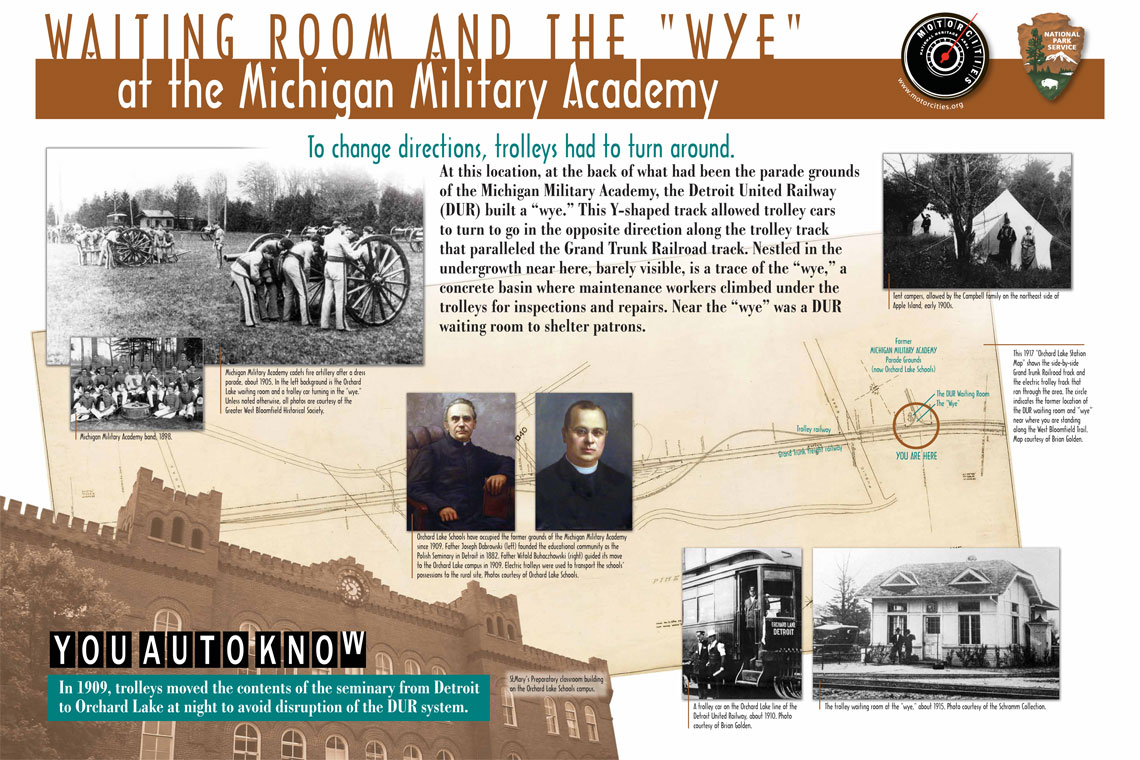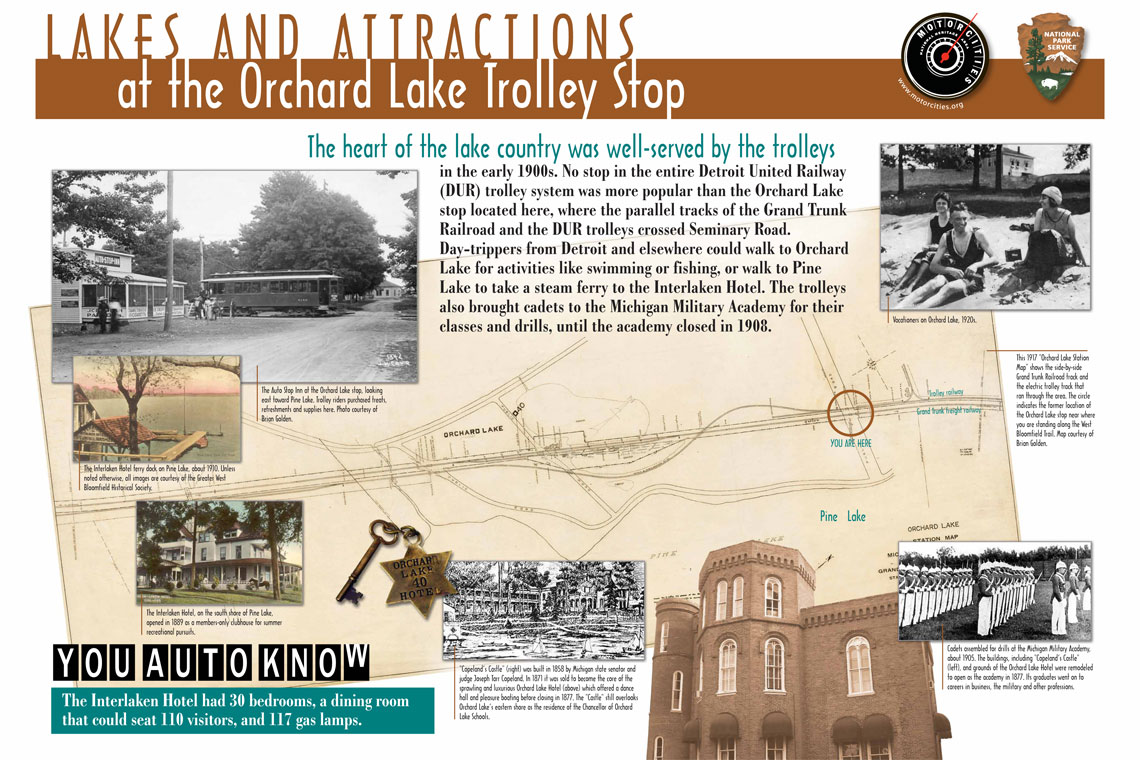To change directions, trolleys had to turn around. At this location, at the back of what had been the parade grounds of the Michigan Military Academy, the Detroit United Railway (DUR) built a “wye.” This Y-shaped track allowed trolley cars to turn to go in the opposite direction along the trolley track that paralleled the Grand Trunk Railroad track. Nestled in the undergrowth here, barely visible, is a trace of the “wye,” a concrete basin where maintenance workers climbed under the trolleys for inspections and repairs. Near the “wye” was a DUR waiting room to shelter patrons.
Wayside Sign – Waiting Room and “The Wye” at the Michigan Military Academy

Object ID: 2013-070-008
Date: 2013
Collection: Michigan Military Academy, Orchard Lake, TransportationSubjects: MMA, Wayside Sign
Wayside Sign – Lakes and Attractions at the Orchard Lake Trolley Stop

Object ID: 2013-070-007
Date: 2013
Collection: Hotels, Orchard Lake, TransportationSubjects: Hotel, Wayside Sign
The heart of the lake country was well-served by the trolleys in the early 1900s. No stop in the entire Detroit United Railway (DUR) trolley system was more popular than the Orchard Lake stop located here, where the parallel tracks of the Grand Trunk Railroad and the DUR trolleys crossed Seminary Road. Day-trippers from Detroit and elsewhere could walk to Orchard Lake for activities like swimming or fishing, or walk to Pine Lake to take a steam ferry to the Interlaken Hotel. The trolleys also brought cadets to the Michigan Military Academy for their classes and drills, until the academy closed in 1908.
Wayside Sign – Tracks Over Tracks on the Detroit United Railway

Object ID: 2013-070-006
Date: 2013
Collection: Orchard Lake, TransportationSubjects: Wayside Sign
Transportation transformed the landscape of rural West Bloomfield as electric trolleys and automobiles appeared around the turn of the 20th century. Many people traveled here for the first time from Detroit and Pontiac, and real estate developers sold lakefront lots. For easier access to beach communities north of the tracks, the Detroit United Railway (DUR) built an overpass to carry its trolleys to the other side of the Grand Trunk Railroad.